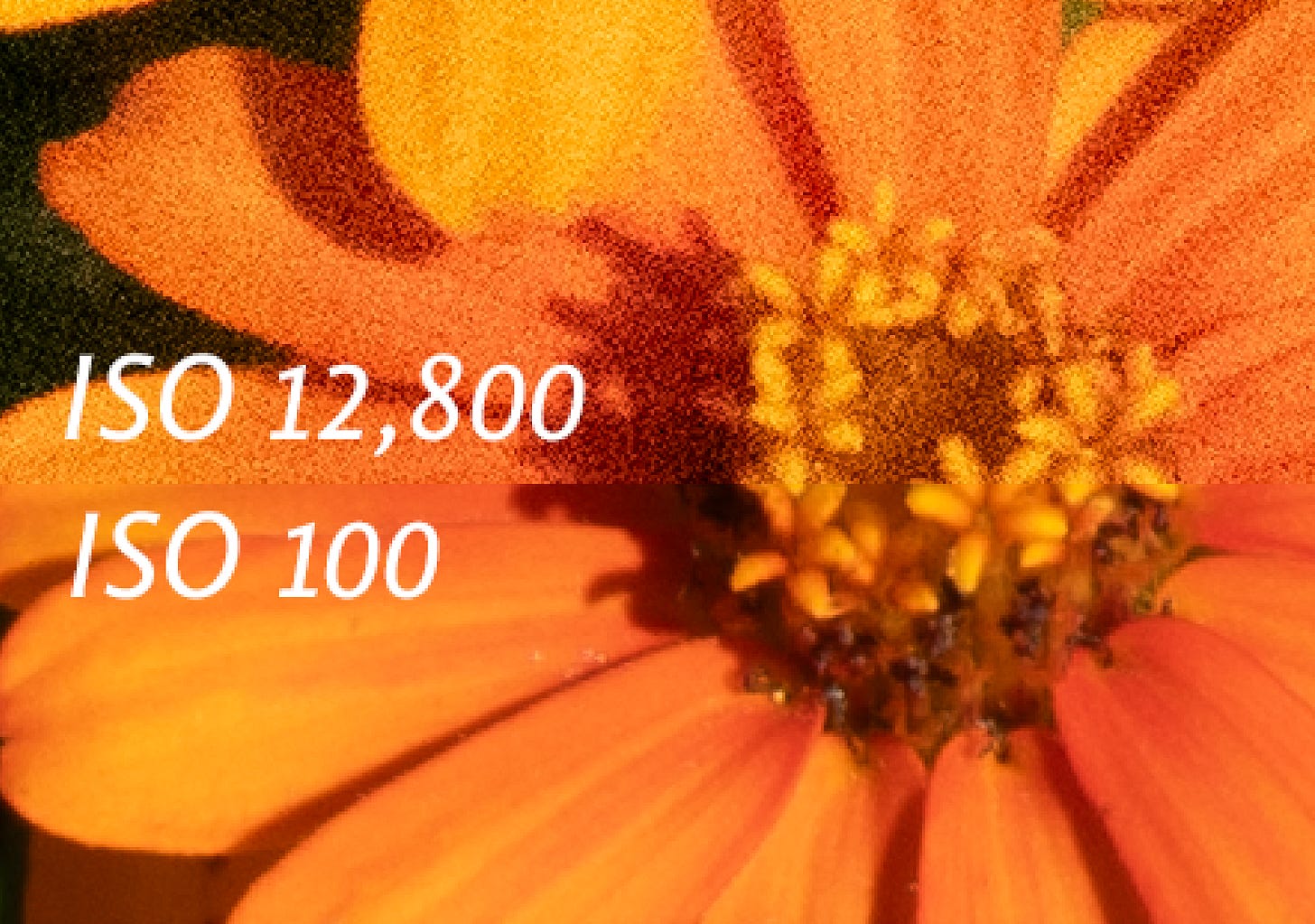Should I Avoid High ISO?
My last couple of articles have been about the benefits of using Base ISO, and that has led to people asking if they should avoid using higher ISO. I want to make it clear that it is okay to use higher ISO. The purpose of these articles has not been to discourage you from using a higher ISO, but to inform you of the effects, so you can decide what choice is appropriate to a particular photograph.
I’ll say it again: You should use whatever ISO you need to freeze motion and avoid camera shake. Camera shake and motion blur, when it is unwanted, will do more to “degrade” the message of your photo than using a higher ISO will. I go out of my way to avoid the blurriness caused by this, using a sturdy tripod with a solid ball head and a cable release, and allowing time for vibrations to stop after touching the camera. When handheld, I use in-body / in-lens stabilization, and a proper hold that keeps the camera more steady. But even those techniques have limits, and when the motion is beyond those limits, I increase the ISO as much as needed to eliminate the motion.
High ISO does not disqualify a photo. I have made museum-quality prints to 30x40 inches, 40x50 inches, and even larger from high ISO files. I would not even think twice about using those photos, and neither should you. The story always comes first, and the expression in a photo matters more than the techniques with which it was made. Technique exists to help us tell that story as best as you can in a given circumstance.
By using the lowest ISO you can get away with, you can increase your quality of expression—but getting the photo always must come first. My goal is not chasing specs, but trying to communicate an expression the best I can. A lower ISO can help in that, but it is not the measure of your final success. The expression is the measure of it.
Your job as a photographer is to understand the tools the best you can so that when you are making a photograph, you make good decisions about the many adjustments under your control. Making a photo at ISO 1600 when you could use the Base ISO would be foolish, as it would throw away information. But trying to use the Base ISO for a photo that needed ISO 6,400 to freeze motion would be equally foolish.
Making a better decision is a free upgrade for your photo. If you can make your photo communicate more clearly by simply making a “better” decision, then that is like free money—why wouldn’t you take it? The more you know about how photography works, the more of that free money you can grab.
But it goes beyond just trying to maximize quality. There are photos you won’t succeed at without a certain level of knowledge. Your knowledge and understanding of the process open up creative possibilities and allow you to get photos you’d otherwise miss. You don’t think those great photos you admire were simply a result of chance, do you? No, they were the result of an educated mind, thinking about the subject, working to be at the right place at the right time, and understanding how to use the camera to capture that.
Knowing what decisions will benefit your photographs (and which ones will be to their detriment) is an important part of learning photography.

